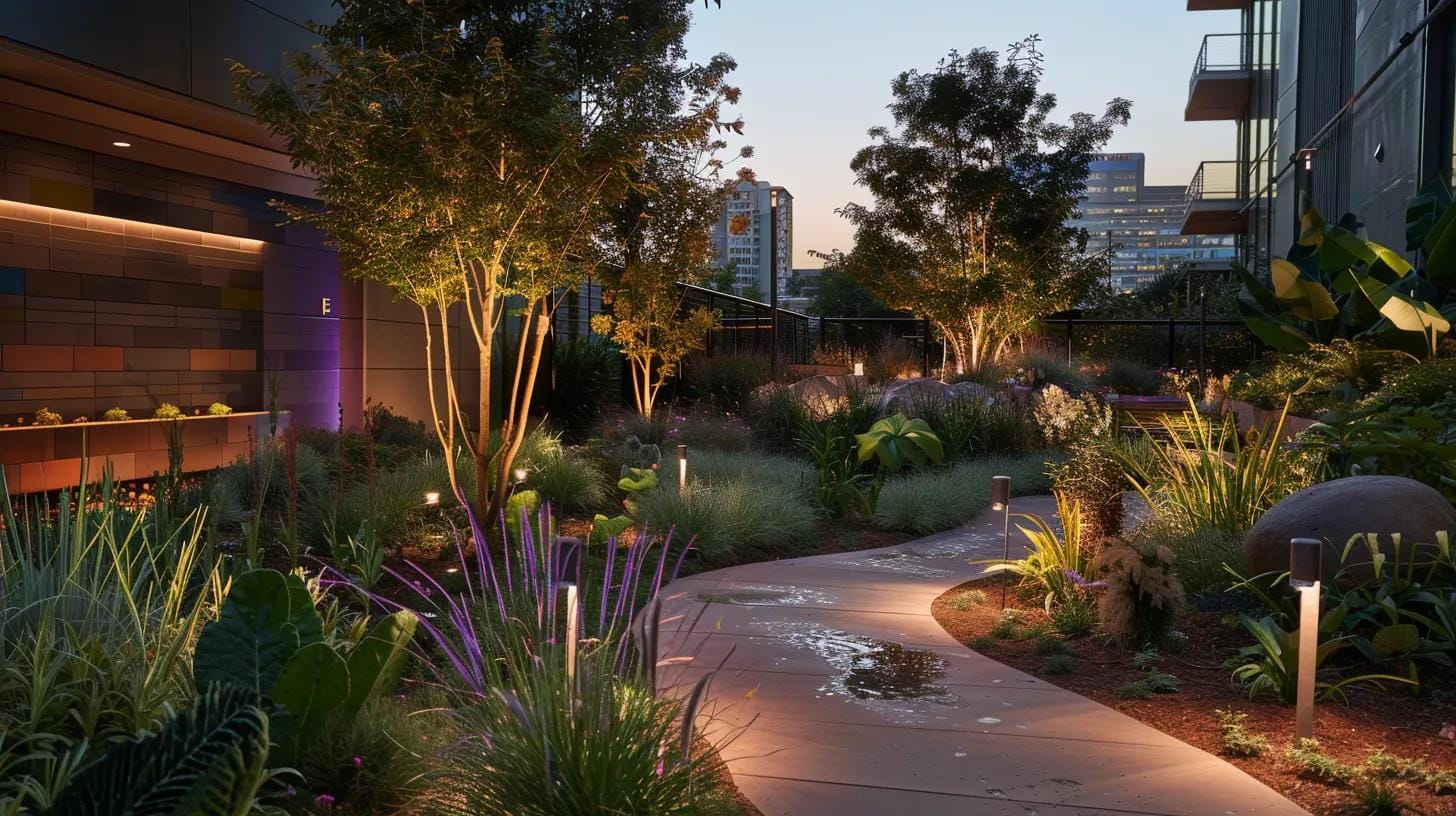In Marietta, where curb appeal and sustainability are increasingly important to commercial property owners, rain gardens offer a smart, attractive solution. These professionally designed landscape features not only manage stormwater runoff effectively but also enhance the beauty of your property and demonstrate environmental responsibility. With rising interest in green infrastructure, businesses that invest in rain gardens often see improved property value, tenant satisfaction, and community perception. In this article, we’ll explore how a well-planned rain garden can elevate your commercial space and deliver lasting returns.
How Rain Gardens in Marietta Are Redefining Commercial Design
Understanding Rain Gardens and Their Commercial Benefits in Marietta
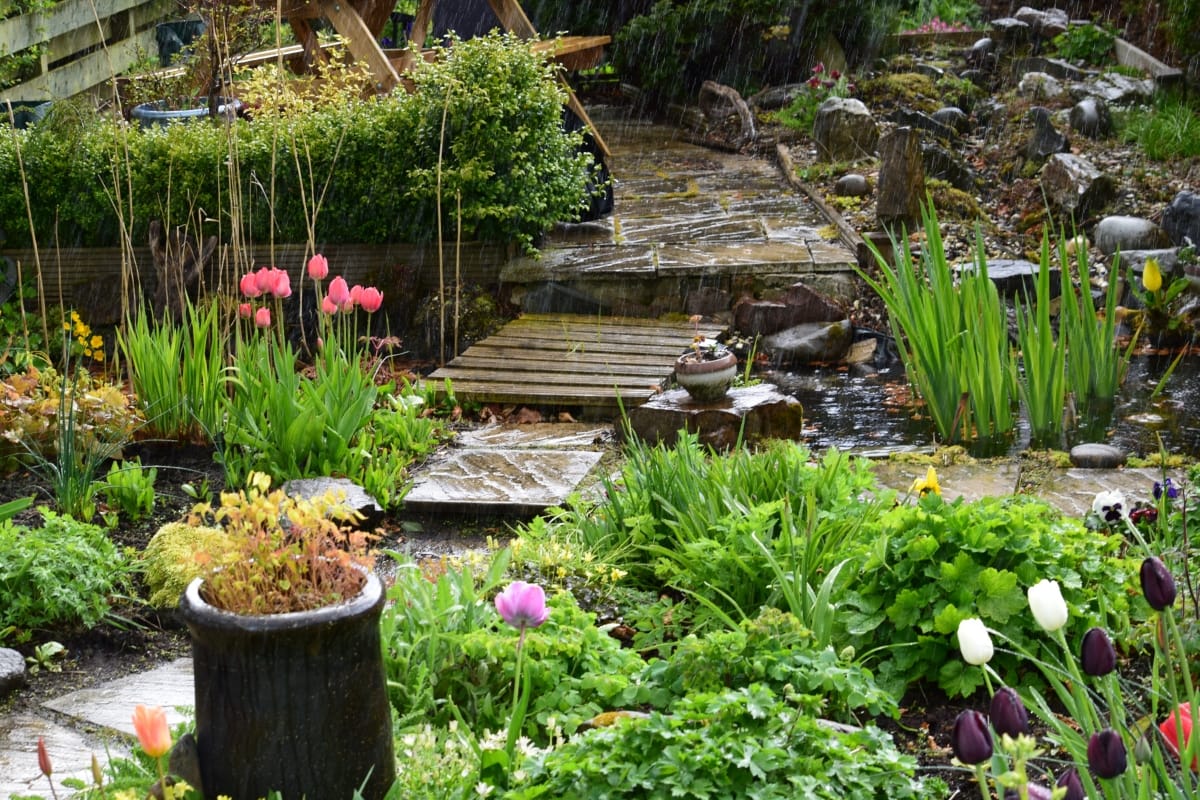
Rain gardens, a key component of landscaping projects and mulch installation, are shallow depressions engineered to capture stormwater runoff and improve soil infiltration. In Marietta, local landscaping companies have widely adopted rain garden installation techniques, often pairing them with yard grading to optimize water absorption, which not only lessens the burden on municipal systems but also enhances site aesthetics by incorporating water features to filter pollutants, thereby reducing flood risks and creating inviting outdoor living spaces. In addition to lowering maintenance costs, many experts now recommend combining dry well installation with comprehensive landscaping services to support improved water quality and sustainable urban development.
Defining Rain Gardens and How They Function for Businesses
Designed as shallow, planted basins, rain gardens (rain garden installation) collect runoff and enhance water infiltration. often complemented by mulch installation and integrated with water features, they act as natural filters by trapping sediments, nutrients, and pollutants—services often provided by landscaping services. Optimal design considers soil composition, slopes (yard grading) and native plant species—all of which help reduce the need for costly underground drainage systems such as dry well installation while managing stormwater efficiently. for more information, visit glover landscapes.
Key Advantages of Rain Gardens for Marietta Commercial Sites
Commercial rain gardens provide multiple benefits:
- They reduce flood risks and help meet local stormwater regulations. In fact, our rain garden installation services, along with dry well installation when needed, ensure that each project is tailored for maximum effectiveness.
- They lower erosion and contribute to long-term savings on infrastructure maintenance, especially when paired with strategic mulch installation and yard grading that enhances soil stability.
- Enhanced curb appeal attracts high-quality tenants and increases property value, with many properties also incorporating outdoor living spaces and collaborating with hardscape contractors on innovative landscaping projects.
- By reducing ambient temperatures and improving water quality with the addition of water features, they foster a healthier urban ecosystem, a goal shared by our dedicated landscaping company.
The Role of Rain Gardens in Sustainable Commercial Landscaping
As natural filtration systems are enhanced by water features, rain gardens are a key component of green infrastructure, and many urban planners recommend rain garden installation to effectively manage stormwater. They reduce the reliance on mechanical drainage, lower energy consumption, and signal environmental stewardship. In many cases, mulch installation is integrated into these projects, with expert landscaping services emphasizing eco-friendly practices. This sustainable approach improves public perception and strengthens a company’s reputation as a dedicated landscaping company committed to environmental care, often incorporating yard grading to optimize overall performance.
How Rain Gardens Contribute to Greener Urban Environments in Marietta
In urban settings, rain gardens enhance resilience by filtering pollutants, promoting groundwater recharge, and supporting biodiversity. Integrating rain garden installation and landscaping projects into these spaces ensures effective stormwater management and optimizes outdoor living spaces, while tailored landscaping services further improve the area’s functionality. Their ability to moderate urban heat islands and create microhabitats for various species is complemented by the incorporation of water features and precise yard grading executed by hardscape contractors, adding to the overall livability and environmental sustainability of commercial areas. For further inspiration and personalized solutions, check our blog and contact us.
Differentiating Commercial Rain Gardens From Residential Applications
While both commercial and residential rain gardens manage stormwater—with professional rain garden installation often employed for optimized efficiency—commercial versions are typically larger and built to handle higher runoff volumes. For enhanced functionality, dry well installation is sometimes integrated to further manage excess water, while glover landscapes often design complementary water features to boost both performance and aesthetics. Their robust construction, specialized plant selection, and design for high-traffic areas are further enhanced by comprehensive landscaping services, yard grading techniques, and mulch installation, ensuring superior performance in demanding business environments and creating inviting outdoor living spaces.
The Financial Upside How Rain Gardens Increase Commercial Property Value
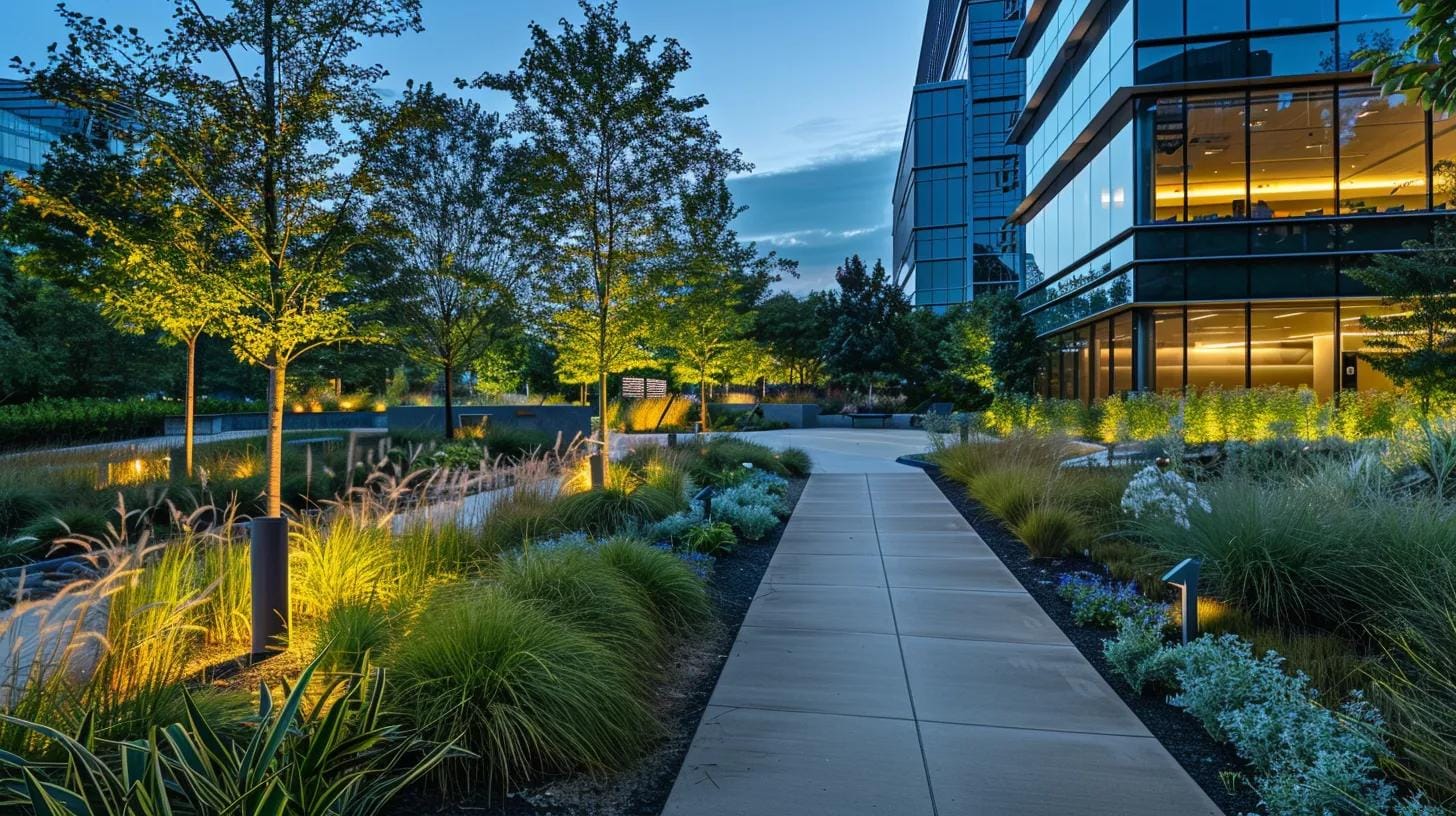
A professionally designed rain garden installation, an integral part of our landscaping services, can boost a commercial property’s value by lowering operating costs and reducing flood damage risks—enhanced further by strategic mulch installation. In addition, our integrated approach combines yard grading and water features to optimize drainage while creating inviting outdoor living spaces that elevate both functionality and aesthetics. These features, coupled with enhanced curb appeal and potential tax incentives, yield a strong return on investment.
Direct Impact of Professional Rain Garden Design on Asset Worth
Expertly designed rain gardens, featuring rain garden installation and water features, visibly demonstrate environmental responsibility while highlighting landscaping services. This can increase property marketability and drive value boosts—studies suggest enhancements of up to 15%—with improvements like mulch installation and yard grading helping to lower ongoing maintenance and repair costs.
Attracting Tenants and Buyers With Eco-Friendly Rain Garden Features
Green features, including water features and landscaping services, along with mulch installation, are appealing to eco-conscious tenants and buyers. Properties featuring rain gardens—with expert rain garden installation and precise yard grading—typically secure long-term leases and higher rental rates by creating inviting outdoor living spaces that meet market demands for sustainable practices and cost-effective operations.
Long-Term Cost Savings From Rain Garden Stormwater Management
By managing stormwater naturally, rain gardens reduce dependency on expensive conventional drainage, making rain garden installation and yard grading an ideal solution for many local landscaping services. Lower maintenance expenses, decreased risk of water damage, and reduced insurance premiums all contribute to long-term operating savings. For more information, contact us. In addition, options such as dry well installation, mulch installation, and water features can further enhance the overall effectiveness of your stormwater strategy.
Comparing Properties With and Without Professionally Designed Rain Gardens
| Feature/Attribute | With Rain Garden | Without Rain Garden |
|---|---|---|
| Stormwater management efficiency | High (up to 90% reduction) | Low (increased flood risk) |
| Aesthetic appeal | Enhanced natural landscape | Urban, bare appearance |
| Property value increase | Up to 15% higher | Baseline value |
| Operational cost savings | Reduced maintenance expenses | Higher repair and insurance costs |
| Tenant appeal | Eco-friendly and attractive image | Conventional look |
Potential for Tax Incentives or Rebates for Marietta Rain Gardens
Local and state programs may offer rebates or tax incentives for green infrastructure projects like rain garden installation, landscaping projects, and landscaping services. In addition, water features can enhance both the aesthetics and functionality of properties. These programs can offset initial costs and further improve the financial feasibility of installing such systems, particularly when enhanced with mulch installation, yard grading, and the creation of inviting outdoor living spaces.
Professional Rain Garden Design: The Key to Maximizing Value
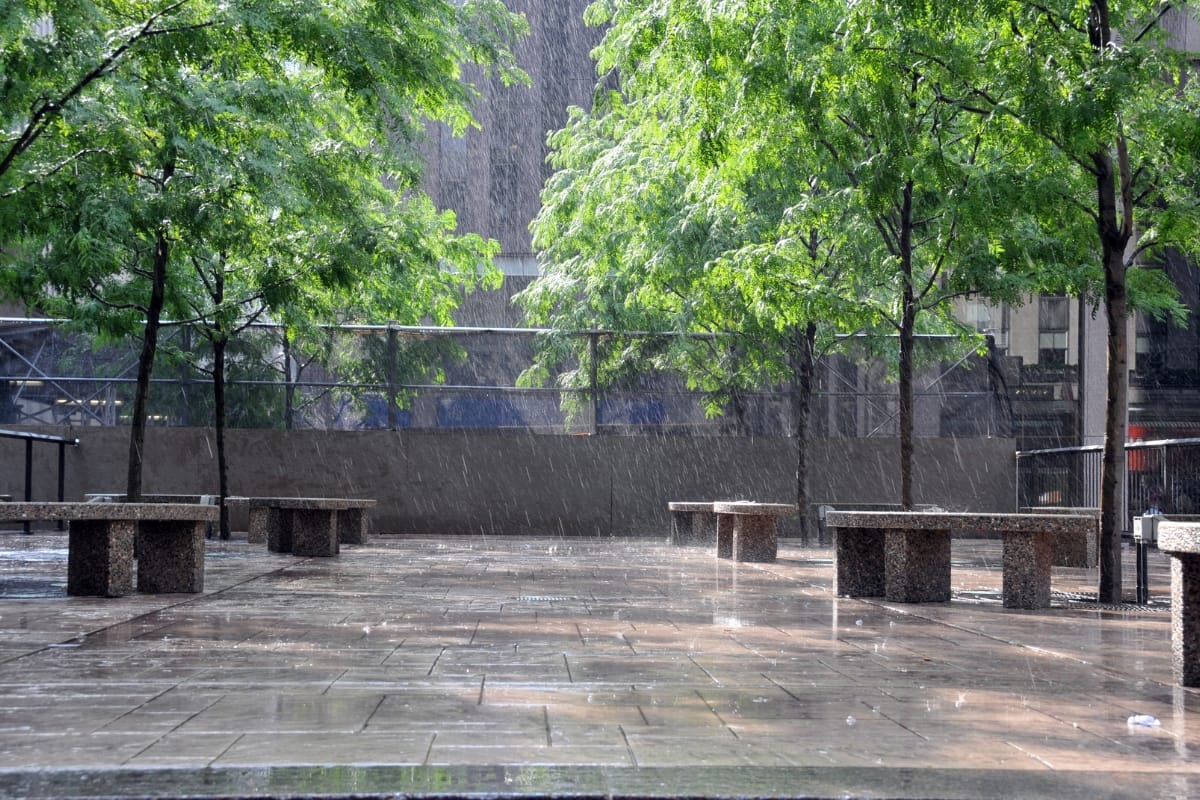
Professional design ensures that a rain garden not only performs optimally but also benefits from careful rain garden installation, mulch installation, and dry well installation, adding lasting value. Experts integrate the garden seamlessly with a property’s infrastructure by incorporating yard grading, landscaping services, and water features, while collaborating with hardscape contractors to create inviting outdoor living spaces that address both environmental and aesthetic requirements—surpassing the performance of DIY solutions.
Why Expert Design Surpasses DIY for Commercial Rain Gardens
Professionals use precise calculations and quality materials like mulch installation to address site-specific challenges such as soil compaction, yard grading, dry well installation, and runoff volume. Their designs reduce long-term maintenance costs and help the system perform efficiently even during heavy rainfall, immediately enhancing property value through landscaping services, water features, and rain garden installation.
Elements of a High-Value Professional Rain Garden Design
Key design elements include: • Proper yard grading and water balance calculations provided by landscaping services. • Selection of native, drought-resistant plants appropriate for Marietta’s climate, complemented by mulch installation to enhance soil retention and plant health. • Integration of engineered drainage layers, permeable pavers, and overflow systems—along with rain garden installation, water features, and dry well installation to further manage variable rainfall.
Integrating Rain Gardens Seamlessly With Existing Commercial Landscapes
Professional designers from glover landscapes position rain gardens, often incorporating rain garden installation and mulch installation so they complement existing structures and traffic flow. Many of these experts in landscaping services and yard grading ensure that each space is uniquely tailored to its surroundings. Strategically placed near building entrances, parking lots, or outdoor living spaces, these gardens also integrate water features along with a subtle fire feature to enhance both the aesthetic and functional aspects of the overall landscape.
The Process of Working With Rain Garden Design Professionals in Marietta
The process starts with a thorough site assessment, including yard grading, with assistance from landscaping services and hardscape contractors, followed by detailed design planning, the creation of outdoor living spaces, and collaborative discussions regarding plant selection, irrigation, water features, and rain garden installation. Professionals obtain permits and oversee installation, ensuring that mulch installation meets all local regulations and integrates well with the property.
Ensuring Your Rain Garden Design Meets Marietta’s Specific Needs
Designs must address local challenges—variable rainfall, high runoff volumes, and soil types—by incorporating solutions like rain garden installation, dry well installation, yard grading, and mulch installation to ensure maximum performance. By tailoring every element, professionals in landscaping services not only ensure compliance but also integrate water features and outdoor living spaces to elevate the property’s green credentials.
Strategic Placement and Sizing of Rain Gardens on Commercial Land
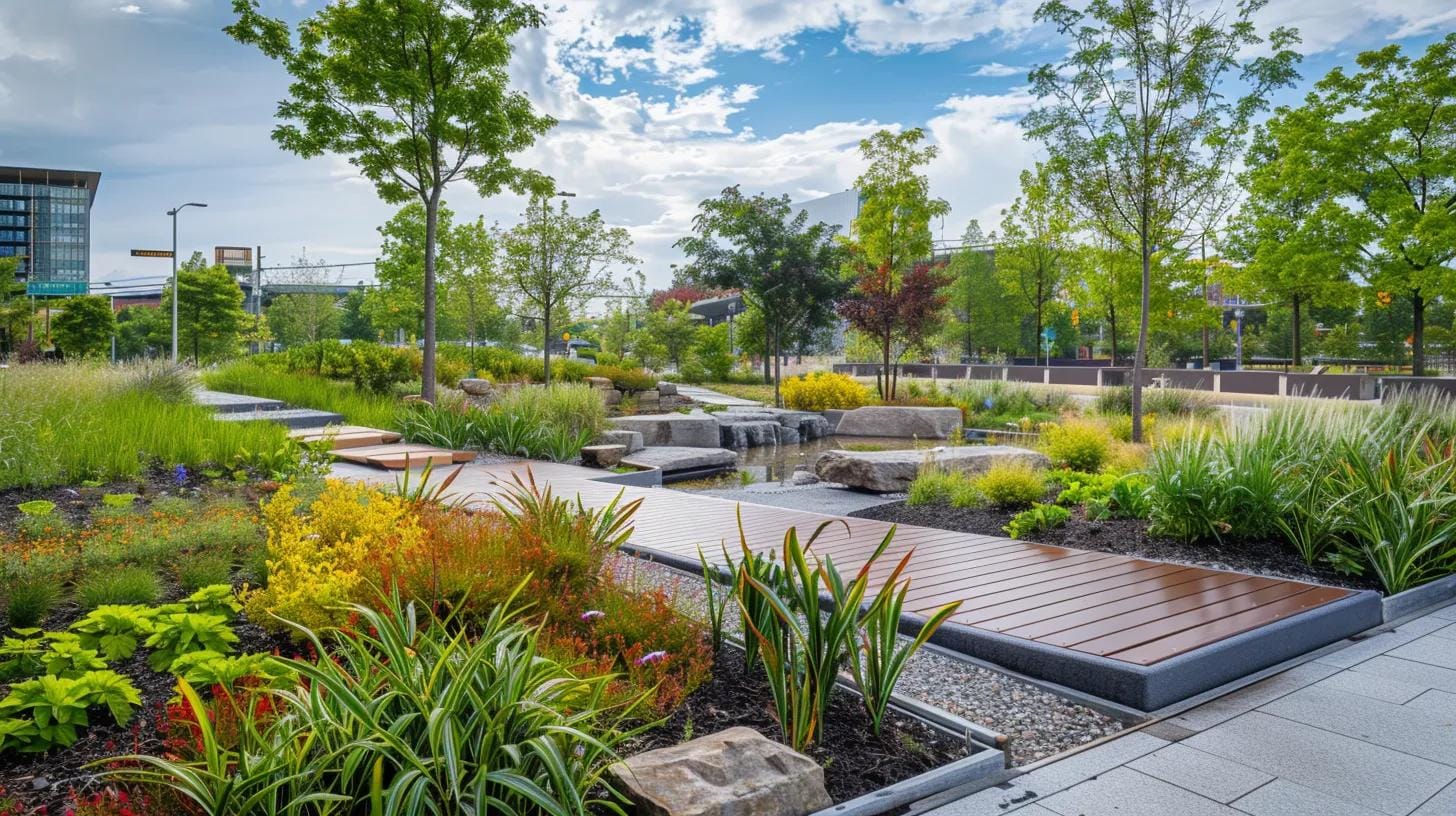
Proper location and sizing are critical to a rain garden’s success. Strategic placement allows for effective stormwater capture, while appropriate sizing helps prevent overflow and ensures the garden functions well during periods of heavy rainfall.
Optimal Locations for Rain Gardens on Marietta Commercial Properties
Ideal placement includes the edges of parking lots, areas near downspouts, and open courtyards. These locations naturally collect runoff and offer opportunities to manage stormwater before it enters storm drains. Rain gardens in these areas help reduce surface runoff, mitigate localized flooding, and enhance the visual appeal of commercial landscapes. When paired with effective grading, well-chosen plantings, and supportive hardscape features, they contribute to both environmental sustainability and curb appeal.
Calculating the Appropriate Size for an Effective Rain Garden
A rain garden must be proportionate to the area it drains. Proper sizing is determined by calculating the catchment area, local rainfall intensity, and soil infiltration rate. These calculations guide the garden’s dimensions to ensure it can capture and absorb runoff without pooling or erosion. Incorporating organic mulch and managing soil structure supports plant health and water retention. When designed correctly, a rain garden functions as a low-maintenance, high-impact feature that also benefits surrounding green spaces.
How Site Assessment Influences Rain Garden Design and Placement
A thorough site assessment considers slope, soil composition, drainage patterns, and the surrounding landscape. These factors influence how water flows across the property and determine the most effective placement and depth of the rain garden. Identifying potential challenges such as compacted soils or sediment accumulation ensures the final design performs well and integrates smoothly with existing landscaping. The result is a system that supports plant vitality and contributes to long-term stormwater management.
Managing Runoff From Rooftops and Paved Areas With Rain Gardens
Rain gardens can be strategically placed to intercept runoff from rooftops, sidewalks, and paved parking areas. Directing water into the garden through swales or inlet structures helps control volume and velocity. This targeted approach reduces erosion, improves water quality, and lessens the strain on municipal drainage systems. With proper design and integration, the garden becomes a functional part of the property’s stormwater infrastructure.
Incorporating Rain Garden Overflow Systems for Heavy Rainfall
To ensure resilience during major storm events, overflow systems are essential. These may include secondary drainage channels, gravel-filled dry wells, or integrated berms that help guide excess water away from the garden. Proper grading and drainage planning protect both the garden’s structure and nearby landscape features, minimizing the risk of flooding and damage during peak runoff. An effective overflow solution helps maintain the system’s integrity and reinforces its long-term performance.
Selecting the Right Plants for Your Marietta Rain Garden
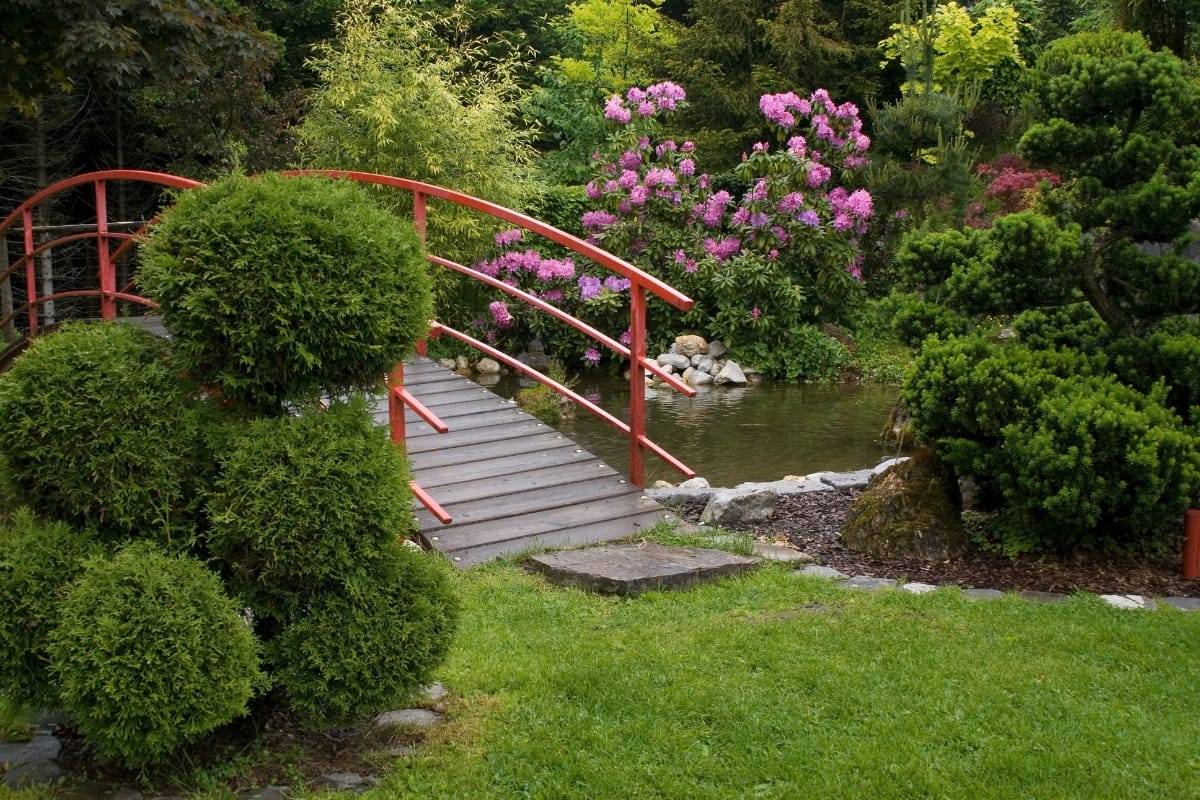
Plant selection plays a vital role in a rain garden’s ability to filter water effectively while maintaining year-round visual appeal. Choosing native and well-adapted species reduces maintenance needs and ensures long-term success in Marietta’s climate.
Native Plant Choices Thriving in Marietta’s Climate for Rain Gardens
Plants like switchgrass, blue flag iris, and joe-pye weed are excellent options for local rain gardens. These native species are adapted to the regional climate and soil conditions, offering strong ground coverage and improving soil permeability. Their presence also supports local wildlife, especially pollinators, while contributing to overall ecological balance. When combined with thoughtful yard grading, mulch application, and the inclusion of water features, these plants enhance both the garden’s functionality and its aesthetic value.
Plant Characteristics for Optimal Rain Garden Filtration and Aesthetics
Selecting plants with deep, fibrous root systems helps stabilize soil and improve filtration by absorbing runoff and trapping pollutants. Broad-leaf varieties are also effective at capturing airborne contaminants. A diverse mix of textures, colors, and heights not only supports water management goals but also adds seasonal interest to the landscape. Proper integration with landscape elements such as mulch, grading, and structural water features strengthens the garden’s long-term performance.
Arranging Plants Within Rain Garden Zones for Success
Effective plant arrangement involves organizing species by their moisture tolerance. Plants that thrive in consistently wet conditions should be placed in the center or lowest point of the garden, while those more tolerant of dry spells belong on the outer edges. Layered planting, incorporating varying heights and growth habits, reduces plant competition, encourages biodiversity, and enhances visual depth. This zoned approach supports healthy plant growth and maximizes stormwater management benefits.
Low-Maintenance Plant Options for Commercial Rain Gardens
In commercial settings, low-maintenance plants like ornamental sedges, ferns, and native grasses are practical choices. These species are drought-tolerant, disease-resistant, and capable of thriving without frequent intervention. Their durability makes them ideal for high-traffic properties where reliability and reduced upkeep are priorities. When paired with smart design strategies—like efficient grading and organic mulch—these plants contribute to a resilient and attractive rain garden.
Plants That Attract Pollinators to Your Commercial Rain Garden
Incorporating flowering plants such as coneflowers, bee balm, and black-eyed Susans boosts biodiversity and supports local ecosystems. These species attract bees, butterflies, and other beneficial insects while adding vibrant color and movement to the landscape. Integrating pollinator-friendly species with rain garden infrastructure enhances ecological value and strengthens the garden’s role as a sustainable, multi-functional space within commercial properties.
Installation of Commercial Rain Gardens: A Professional Approach
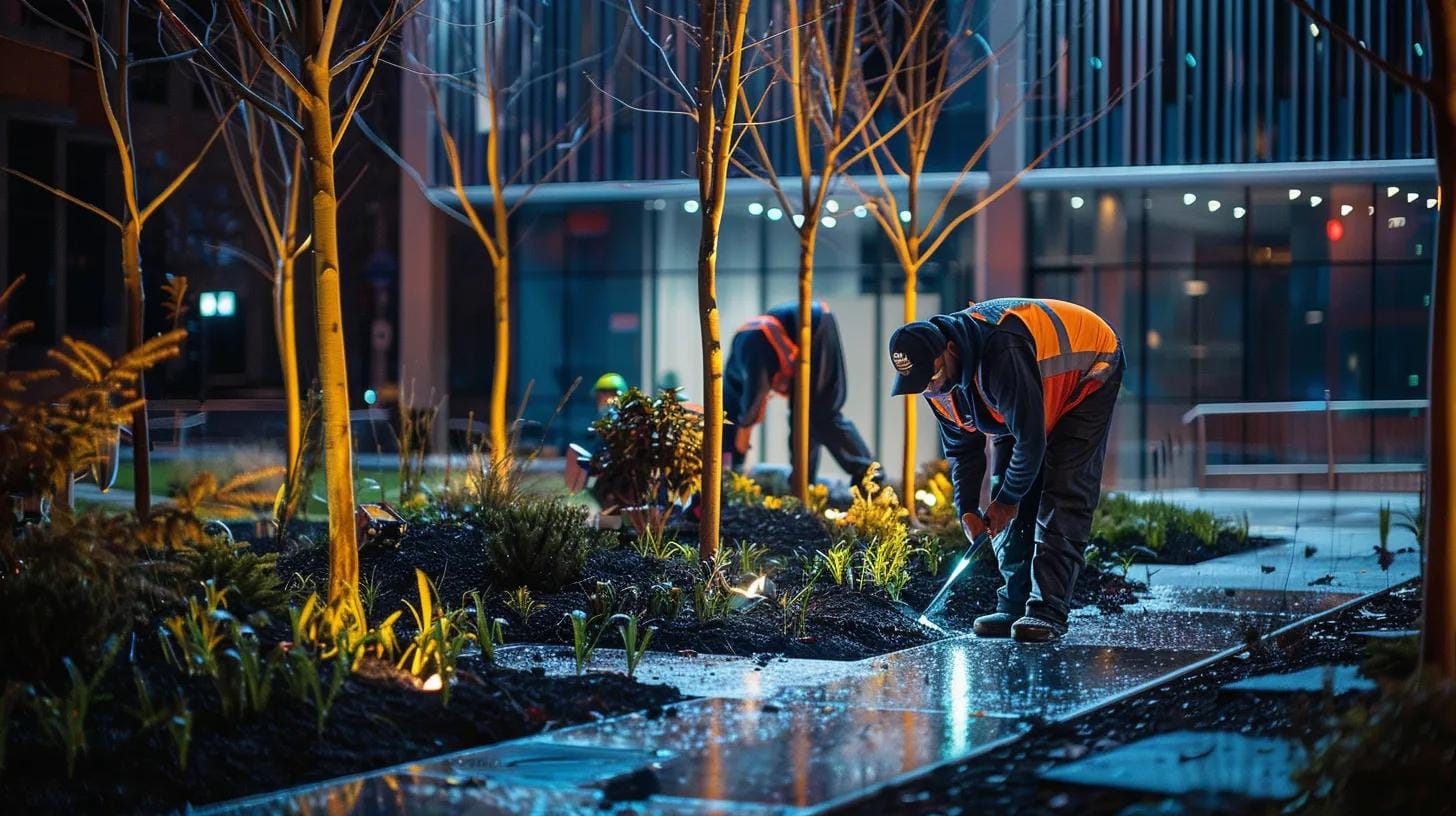
Successful rain garden installation on commercial properties requires detailed planning, expert execution, and coordination between landscaping and hardscaping elements. Professional installers begin by preparing the site with proper yard grading, soil amendments, and mulch application. These foundational steps, along with the integration of water features and structural hardscapes, ensure that the rain garden performs as intended while contributing to an attractive and functional outdoor environment.
Steps Involved in a Professional Rain Garden Installation
Installation begins with a thorough site evaluation and the development of a custom design plan. Key tasks include grading the landscape to shape the basin, installing drainage infrastructure, and applying mulch to promote soil health. Plant selection and placement are coordinated with hardscape elements such as walkways or retaining walls to enhance both appearance and performance. Each phase is executed with attention to detail to ensure that the rain garden effectively manages runoff and integrates seamlessly with the surrounding landscape.
Soil Preparation and Amendments for Marietta Rain Gardens
Proper soil preparation is essential for promoting water infiltration and supporting healthy plant growth. In areas with dense clay or compacted soils, the addition of compost, sand, and organic mulch helps to improve permeability and root development. These amendments are often part of a broader site preparation strategy that may include reshaping the grade and installing water-retentive features. In some cases, artificial turf or other low-maintenance enhancements may be included to support functionality and aesthetics in adjacent outdoor spaces.
Ensuring Proper Drainage and Infiltration in Your Rain Garden
An effective rain garden relies on well-designed drainage and infiltration systems. Components such as perforated pipes, gravel beds, and dry wells help direct and manage stormwater while preventing erosion and standing water. Grading is critical to ensure that water flows into the garden and disperses evenly. These systems are designed to handle both average rainfall and more intense storm events, improving the longevity and resilience of the garden.
The Role of Hardscaping Elements in Rain Garden Construction
Hardscape features such as retaining walls, edging, and permeable walkways play a key role in shaping the rain garden and guiding water flow. These elements also help reduce erosion, define space, and enhance overall landscape structure. Thoughtful integration of hardscaping with natural planting areas supports both functionality and aesthetics, making the garden an inviting and purposeful part of the commercial property.
Timeline and Expectations for Commercial Rain Garden Installation
The timeline for installing a commercial rain garden typically ranges from a few weeks to one month, depending on the project’s complexity and scale. The process includes planning, excavation, grading, drainage installation, planting, and final detailing. Coordination across disciplines—such as landscaping, hardscaping, and irrigation—ensures that all components are implemented efficiently and contribute to a cohesive, high-performing outdoor space.
Maintaining Your Marietta Commercial Rain Garden for Lasting Value
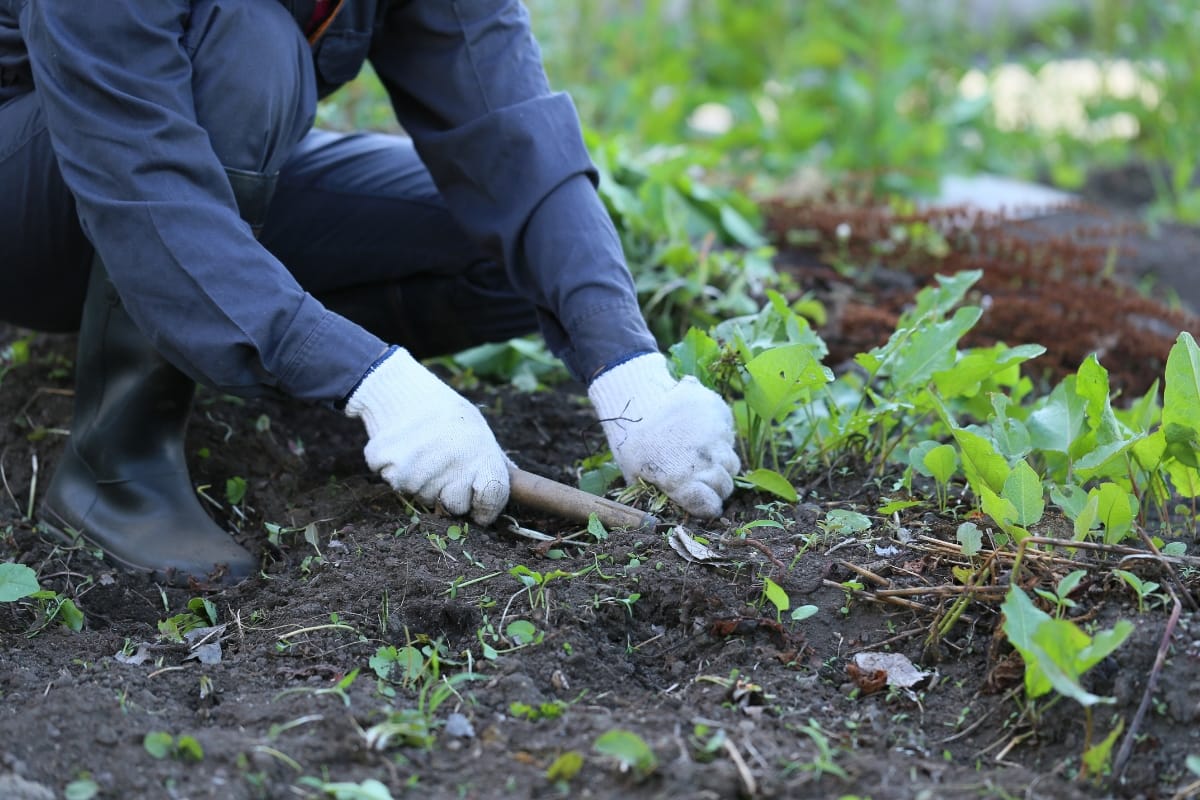
Ongoing maintenance is key to a rain garden’s lasting success, supported by effective rain garden installation and landscaping services. Regular care, including mulch installation, ensures that the garden continues to filter stormwater, remains visually appealing, and functions efficiently over the long term.
- Essential Maintenance Practices for Commercial Rain Gardens: Routine inspections, clearing of clogged inlets, and sediment removal are critical. Periodic soil testing and adjustments help maintain optimal performance and extend the garden’s lifespan.
- Watering Needs for Newly Established and Mature Rain Gardens: Newly planted gardens require regular watering to establish deep roots. many homeowners often rely on landscaping services and mulch installation as essential methods to nurture their gardens. Over time, as plants mature, reliance on natural rainfall increases while irrigation is gradually reduced to avoid waterlogging. additionally, rain garden installation can help manage excess water and promote a natural drainage system.
- Weeding and Mulching Techniques for Healthy Rain Gardens: Regular weeding and mulch installation help control invasive species, regulate soil temperature, and conserve moisture. These landscaping services reduce maintenance costs and keep the garden aesthetically pleasing. Additionally, efficient yard grading and rain garden installation further enhance outdoor living spaces.
- Addressing Common Rain Garden Issues Like Sediment Buildup or Plant Health: Periodic cleanings to remove sediment and monitoring for pest or disease issues are essential. Swift replacement of underperforming species maintains the garden’s balance and functionality.
- Seasonal Care for Your Marietta Rain Garden: Seasonal adjustments are necessary: in spring, planting and fertilization promote growth along with mulch installation; in summer, care addresses drought stress with rain garden installation measures; in fall, yard grading supports effective leaf cleanup; and in winter, protection minimizes frost damage while a reliable landscaping company approach ensures durability. Tailored care throughout the year supports consistent performance.
Rain Gardens and Stormwater Management in Marietta
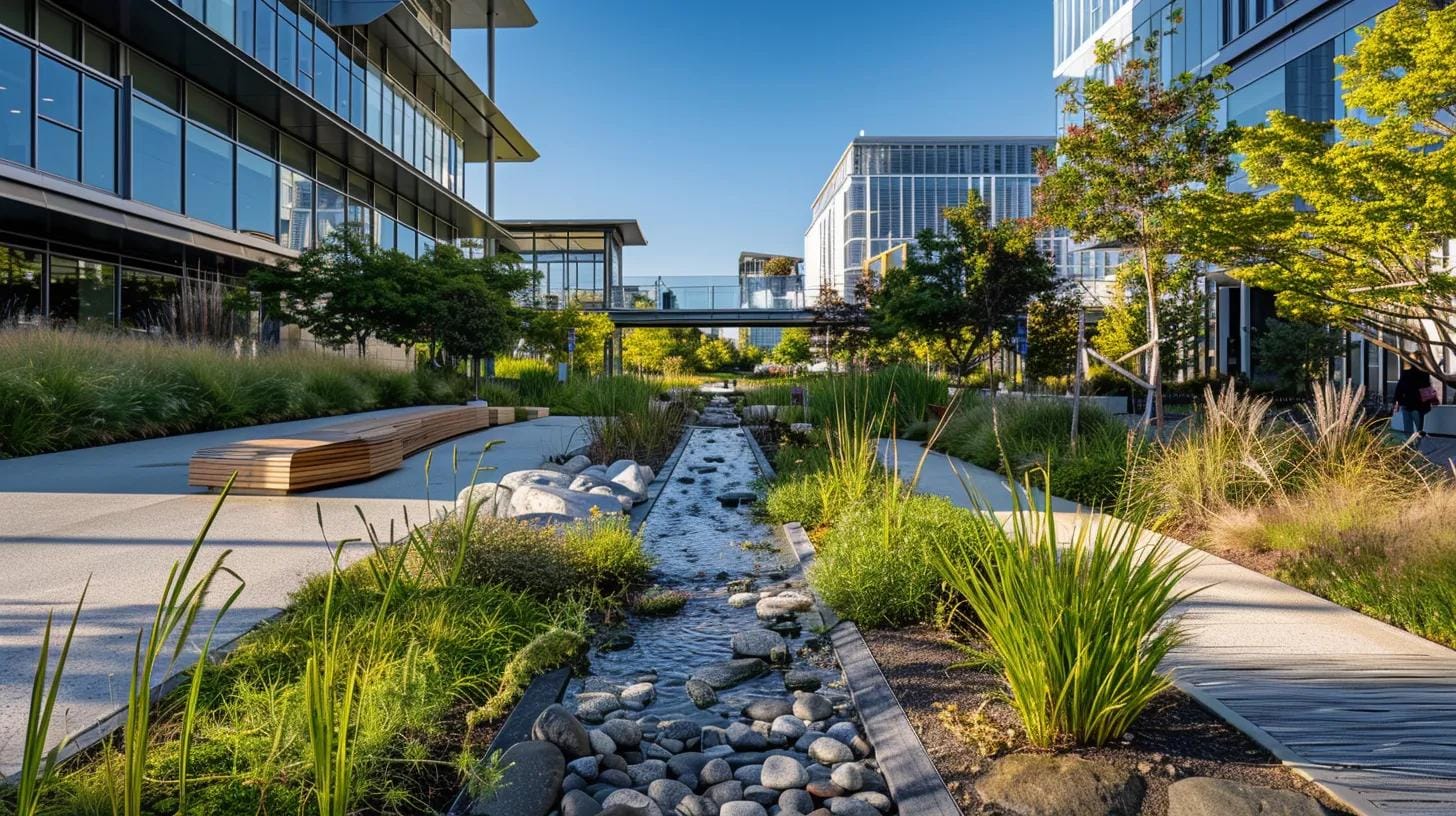
Rain gardens play a vital role in managing stormwater by capturing runoff, reducing flood risks, and easing pressure on municipal drainage systems. Their natural filtration capabilities improve water quality and support sustainable urban development. When thoughtfully designed, rain gardens can also enhance the visual appeal of a landscape and complement outdoor living areas.
How Rain Gardens Reduce Stormwater Runoff on Commercial Properties
Rain gardens help capture water from impervious surfaces such as rooftops and parking lots, slowing down peak flow and reducing erosion. By temporarily storing and gradually releasing water, they help prevent flooding and limit damage to nearby infrastructure. These systems are increasingly used on commercial properties as part of broader green infrastructure initiatives.
The Role of Rain Gardens in Improving Local Water Quality
As runoff filters through the soil and plant root systems in a rain garden, pollutants such as oil, sediment, and heavy metals are naturally removed. This filtration process helps improve the quality of water that eventually enters local waterways, supporting healthier ecosystems and contributing to cleaner public water resources.
Meeting Marietta Stormwater Regulations With Rain Gardens
Rain gardens provide an effective and compliant method for stormwater management that aligns with local regulations. Their use can help streamline permitting processes and reduce the risk of fines by offering a natural, low-impact approach to meeting stormwater control requirements.
Rain Gardens as a Component of a Comprehensive Drainage Solution
When used in conjunction with other stormwater strategies—such as bioswales, permeable pavements, and retention basins—rain gardens contribute to a more holistic drainage system. Together, these elements help manage large volumes of runoff, increase infiltration, and support long-term sustainability goals on both residential and commercial sites.
Preventing Erosion and Localized Flooding With Rain Gardens
By slowing and dispersing water across a larger surface area, rain gardens reduce the risk of concentrated runoff that can lead to erosion and localized flooding. This not only protects the immediate landscape but also helps preserve nearby structures and infrastructure from water damage.
Cost Considerations and ROI for Commercial Rain Gardens in Marietta

While the upfront costs of installing a commercial rain garden can be significant, the long-term savings, environmental benefits, and potential increase in property value make it a worthwhile investment.
Estimating the Investment for a Professional Rain Garden Design and Installation
Total costs vary based on project size, site complexity, and material quality. Typical expenses include site evaluation, design planning, excavation, grading, drainage system installation, mulch application, and plant selection. When designed effectively, rain gardens can also lead to long-term operational savings and may qualify for local incentives, improving the overall return on investment.
Factors Influencing the Overall Cost of Commercial Rain Gardens
Several factors contribute to the final cost of a rain garden, including the need for soil testing and amendment, the selection of native or climate-adapted plants, and the use of engineered drainage components. Design intricacy, labor costs, and local rainfall patterns also play a significant role in determining the total expense.
Calculating the Return on Investment for Rain Gardens Through Property Value
Rain gardens offer both direct and indirect financial returns. In addition to reducing costs associated with stormwater management and landscape maintenance, they can enhance a property’s curb appeal and sustainability profile. Well-integrated rain gardens are often associated with increased property values, particularly on commercial sites that prioritize eco-friendly design and stormwater compliance.
Long-Term Financial Benefits Versus Upfront Rain Garden Costs
Over time, rain gardens help reduce risks related to flooding, soil erosion, and infrastructure damage, which can lead to lower repair and insurance costs. Their contribution to stormwater compliance and sustainability goals also improves a property’s overall marketability, further strengthening the financial case for installation despite higher initial costs.
Budgeting for Ongoing Rain Garden Maintenance
An annual maintenance budget should account for routine tasks such as soil amendment, mulch replenishment, plant pruning or replacement, and periodic system inspections. Proactive maintenance extends the life of the rain garden and ensures consistent performance, making it a cost-effective component of long-term site management.
Finding and Selecting a Rain Garden Professional in Marietta

Selecting the right professional is critical to the success of any rain garden project. The ideal candidate should demonstrate local expertise, a strong track record, and clear, reliable communication throughout the planning and installation process.
Qualities to Seek in a Commercial Rain Garden Designer or Installer
Look for professionals with a thorough understanding of green infrastructure and local environmental conditions. Extensive experience in site grading, native plant selection, drainage integration, and sustainable landscape practices is essential. Positive client feedback and a history of successful installations are also important indicators of reliability and competence. A well-rounded provider will typically offer services that span from design to long-term maintenance.
Questions to Ask Potential Rain Garden Professionals
To assess expertise and fit, consider asking the following:
- What is your experience with commercial rain garden installations in the Marietta area?
- Can you share case studies or project references?
- How do you handle site assessment, soil preparation, and plant selection?
- What maintenance services do you provide after installation?
- How do you ensure compliance with local environmental and stormwater regulations?
These questions help clarify the professional’s capabilities and approach, ensuring alignment with your project goals.
Reviewing Portfolios and Case Studies of Marietta Rain Garden Projects
Evaluating past projects provides insight into a professional’s design style, technical execution, and problem-solving skills. Look for examples that include clear documentation, performance outcomes, and attention to aesthetics and function. This review helps set realistic expectations for your own project.
Understanding Local Experience and Knowledge of Marietta’s Conditions
Familiarity with Marietta’s climate, soil composition, rainfall patterns, and regulatory landscape is a major advantage. Local professionals are more likely to design rain gardens that perform well under regional conditions and comply with relevant municipal guidelines.
The Importance of Clear Communication and Contracts With Your Rain Garden Specialist
Establishing clear communication and a detailed contract ensures that the project proceeds smoothly. A strong agreement should outline the scope of work, timeline, materials, budget, and maintenance expectations. This transparency helps prevent misunderstandings and keeps all parties aligned from start to finish.
Frequently Asked Questions
Q: What are the primary benefits of installing a rain garden on a commercial property in Marietta? A: rain gardens reduce stormwater runoff and flood risk, improve water quality by filtering pollutants, and enhance curb appeal—often increasing property value by 10-15% while lowering maintenance costs. Many commercial property owners are now considering rain garden installation as a key element of their landscaping services, often trusting guidance from glover landscapes to ensure optimal results.
Q: How does professional rain garden design differ from a DIY project? A: Professional design features detailed site assessments, precise water and soil management, and engineered materials for long-term functionality and compliance. Many expert teams incorporate rain garden installation and yard grading to ensure optimal performance—advantages that are typically hard to achieve with DIY projects.
Q: How long does it take for a commercial rain garden to provide a return on investment? A: Benefits are often measurable within a few years through reduced operating costs, lower maintenance expenses, and increased property value, though timelines vary by project scale and local conditions. Many clients opt for a rain garden installation as part of their broader landscaping projects, trusting established landscaping services to enhance performance.
Q: What maintenance practices are essential for sustaining a rain garden’s performance? A: Regular inspections, weeding, mulch installation, soil testing, and managing sediment buildup—coupled with periodic rain garden installation reviews and seasonal care—ensure ongoing optimal performance and aesthetic appeal.
Q: Are there any tax incentives available for installing rain gardens (rain garden installation) in Marietta? A: Yes, local and state rebates or tax incentives may offset initial costs by promoting green infrastructure and landscaping services, thereby enhancing long-term financial returns.
Q: How do rain gardens help in meeting local stormwater regulations? A: By capturing runoff and promoting natural infiltration, rain gardens—often supported by rain garden installation and landscaping services—reduce peak flows and meet regulatory standards, easing permits and reducing fines.
Q: What are the best native plant choices for a Marietta rain garden? A: Native species like switchgrass, blue flag iris, and joe-pye weed are ideal due to their adaptability, low maintenance, and effective filtration properties. For those interested in enhancing their space, consider rain garden installation and water features to complement the natural beauty of native plants.
Transforming Commercial Landscapes with Innovative Rain Garden Design
Incorporating a beautifully crafted rain garden not only enhances stormwater management on your commercial property but also elevates curb appeal and value—making it a smart investment for Marietta businesses. With Glover Landscapes’ expert water features design and installation, you’ll enjoy a low-maintenance, eco-friendly feature that attracts attention and supports local ecosystems. Call us at (404) 510-6437 or visit our website to get a free estimate and let’s transform your property with a stunning rain garden today!
